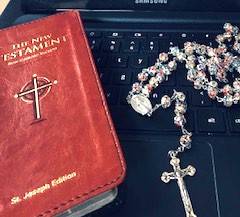
How do you create a Best Friend for your protagonist?
It depends on what you want from that friend. Do you want the BF to be a reflection of your MC? That would be boring. Or do you want to showcase the qualities of your Main Character by giving his BF the opposing qualities? For example, in JR Tolkien’s Trilogy Lord of the Ring, the independence of Frodo as a loner is highlighted by the dependency and loyalty of his BF Sam. It highlights the sense of the lonely burden he carries.
Yet, your BF and MC must have a lot in common to be best friends. When I think of the novel Emma I can’t help but think of her best friend George Knightley. They accept each other’s shortcomings while also sharing a common childhood, class, and social life. They help each other grow and improve. And while in the end, they fall in love for most of the novel they are best friends.
Why develop a Best Friend?
Your protagonist doesn’t stand alone. No one does. They have enemies and friends. In most great literature a best friend character adds both flavor and action to the plot. Think of Sherlock and Watson. Watson highlights the brilliance of Sherlock and supports the dangerous situations that Sherlock gets himself in. The very existence of Watson gives the dry logic of Sherlock a human touch. The best friend character serves many functions. Often they challenge the main character while still supporting them. They become part of the plot, add to the story of the main character, and can even add humor to the tale.
What I appreciate most about the best friend character is the ability to add a subplot to the story with the BF’s own character arc. Often, in the middle of a novel, it gets a little dull. Your character is changing as they grow and learn but the action can slow. This is a great time to deepen your best friend Character. You can explore their friendship and even add a riff that gets healed in the end. Or, you can keep the reader interested by letting the friend evolve perhaps getting over their fear because of their love for the main character or learning how gossip puts their friendship in danger. When I think of best friend characters I can’t help but think of the classic Little Women by Louisa Alcott. In her story, each of the sisters is a best friend character. While Jo is the main character, each sister has their own story and each character helps Jo grow into adulthood. I love novels by Mauve Binchy, who has a special gift for creating BF characters.
Is your Best Friend Character developed enough for the reader to care?
Often writers don’t take the time to develop a real person as the BF character. The friend is never really described and she or he is just a perky cheerleader for the main character. That is a lost opportunity. The best friend should be as developed as the main character. The reader should know their background, struggles, and growth. Let’s think about this
What does your BF character look like? Are they the same or the opposite of your MC? If your MC is frumpy are they fashionably dressed? If your MC is tall and thin, is you BF short and chubby? An author reveals the qualities of a character by showing the reader how a character looks, dresses, and moves, Even their dialog or accent can reveal a twist in the plot. Give your BF a problem. Don’t write a flat or cliche’ character. Make your reader interested in the way the relationship between the two characters helps both the MC and BF grow.
Can you have more than one Best Friend Character?
We’ve already talked about Louisa Alcott and Muave Binchy so think about how more than one BF can really improve the story and even become the plot. In the classic children’s story Heidi by Swiss writer Johanna Spyri, Heidi has two best friends, Peter and Clara. Both are clearly developed characters. Peter is a goat-herder who has a jealous streak and Clara is a despondent city girl in a wheelchair. The interaction between Peter and Clara results in happiness for Heidi. Peter’s jealous streak causes him to break Clara’s wheelchair. His selfish action promotes a ‘cure’ for Clara and ends Heidi on a happy note. So you see the use of multiple best friends can deepen the plot and the interaction between both best friends can make the story interesting. In the Heidi tale, both Peter and Clara mature. Peter learns not to be so possessive and Clara learns faith and courage. The next time you read a book, look for the BF or numerous best friend characters in the tale. How does the author use this character or characters to promote the plot and reveal the qualities of the MC?
In our next blog, let’s look at the role of the Teacher Character.
To follow this series click on http://blog.catholicwritersguild.com/?s=Learning+the+Craft